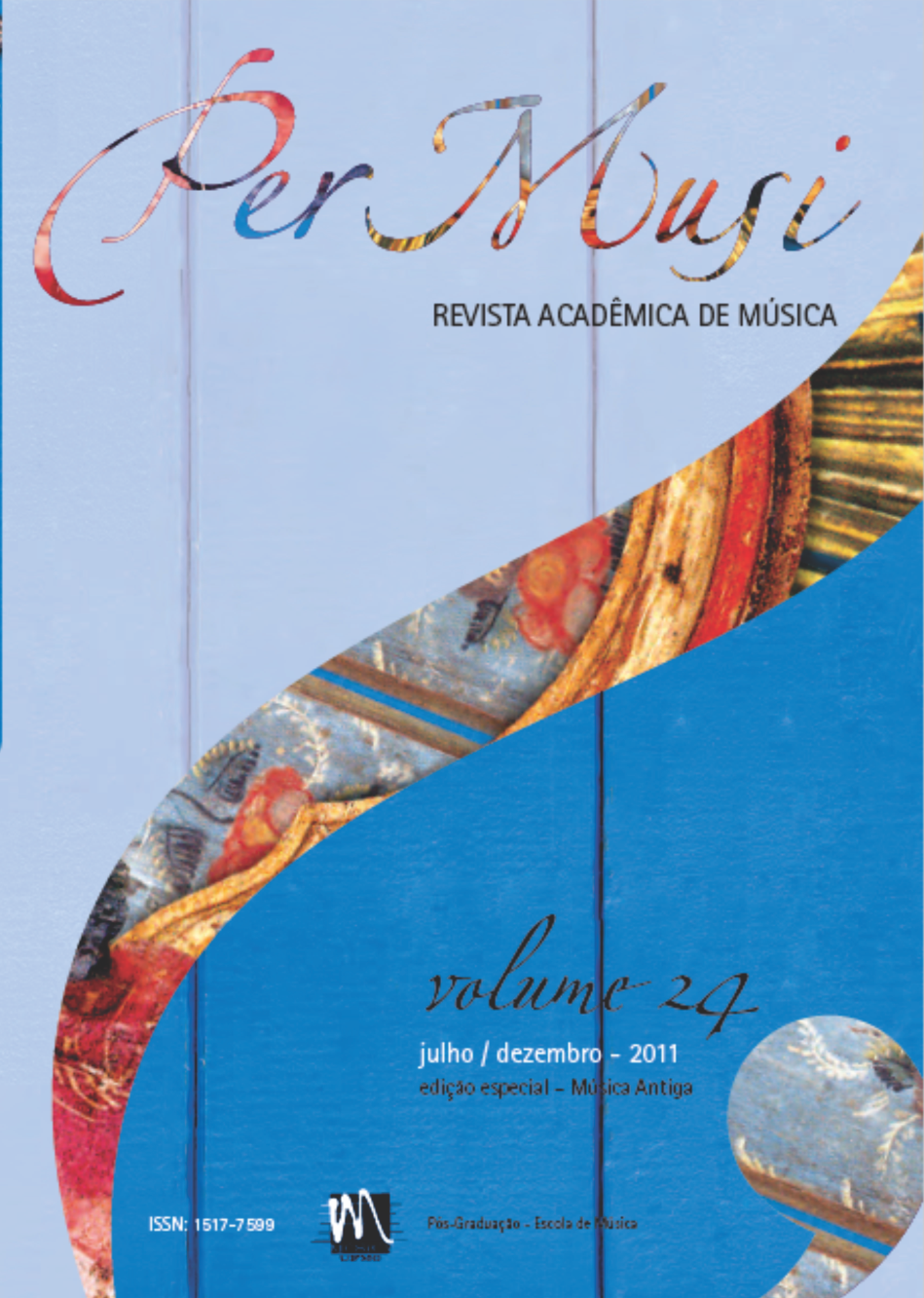Sturm und Drang na música para teclado de Wilhelm Friedemann Bach
evidências reveladas na Polonaise No.4 em Ré menor
Palavras-chave:
Teclado, Bach, W. F, Estilos musicais, ExpressividadeResumo
Este trabalho propõe-se a revelar elementos contextuais e musicais, especialmente aqueles ligados à expressividade, que aproximem a obra para teclado de Wilhelm Friedemann Bach ao movimento Sturm und Drang, ocorrido na Alemanha no início da segunda metade do século XVIII, através do reconhecimento dos procedimentos literários e musicais envolvidos e da análise da Polonaise nº 4, em Ré menor, como obra representativa do que se pretende demonstrar.
Referências
BACH, Carl Ph. E. Essay on the True Art of Playing Keyboard Instruments. Translated and edited by William J. Mitchell. New York, London: W. W. Norton & Company, 1949.
BURNEY, Charles. The Present State of Music in Germany, the Netherlands, and United Provinces. The Second Edition, Corrected. London: T. Becket, Strand; J. Robson, New- Bond Street; and G. Robinson, Pasternoster-Row, 1775. Disponível em http://books.google.com.br/books. Acesso em 27/06/2009.
DOWNS, Philip G. Classical music: the era of Haydn, Mozart and Beethoven. New York: W. W. Norton, 1992.
FALCK, Martin. Wilhelm Friedemann Bach. Sein Leben und seine Werke. Lindau/B: C. F. Kahnt, 1957.
GEIRINGER, Karl et Irène. Bach et sa Famille. Sept Générations de Génies Créateurs. Paris: Editions Buchet/Castel, 1979.
HELM, Eugene. Wilhelm Friedemann Bach. In: The New Grove Bach Family. New York, London: W. W. Norton & Company, 1983.
PAULY, Reinhard G. Music in the Classic Period. Upper Saddle River, New Jersey: Prentice-Hall, Inc., 2000.
ROSENFELD, Anatol. História do Teatro e da Literatura Alemães. São Paulo: Perspectiva: Editora da Universidade de São Paulo; Campinas: Editora da Universidade Estadual de Campinas, 1993.
SAGHAARD, Terezinha. Os estilos musicais na obra para teclado de C. Ph. E. Bach. Instituto de Artes – UNESP. São Paulo, 2001.
VAN ESS, Donald H. The Heritage of Musical Style. New York: Holt, Rinehart and Winston, Inc., 1970.
YOUNG, Percy M. The Bachs. New York: Thomas Y. Crowell Company, 1970.
WOLLNY, Peter. Wilhelm Friedemann Bach. In: The New Grove Dictionary of Music and Musicians. Second Edition. Vol. 2, p.382-387. London: Macmillan, 2001.
______. “...welche dem Grössten Concerte gleichen”: the Polonaises of Wilhelm Friedemann Bach. In: The Keyboard in Baroque Music. Edited by Christopher Hogwood. NY: Cambridge, 2003.
Partitura
W. F. Bach. Zwölf Polonaisen. Prefácio de Andreas Böhnert. München: G. Henle Verlag, 1993.
Gravações
Wilhelm Friedemann Bach Keyboard Works vol. 1. 12 Polonaises, sonata in D major, Fantasia. Robert Hill, fortepiano. Naxos, 2007.
Wilhelm Friedemann Bach Keyboard Works vol. 2. Fantasias und Fugues. Julia Brown, harpsichord. Naxos, 2008.
Downloads
Publicado
Edição
Seção
Licença

Este trabalho está licenciado sob uma licença Creative Commons Attribution 4.0 International License.

Exceto onde está indicado, o conteúdo neste site está sob uma Licença Creative Commons - Atribuição 4.0 Internacional.












